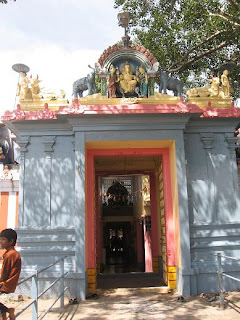Tiruputkuzhi Vijayaraghav Perumal Temple

Tiruputkuzhi is a small village near Kanchipuram, easily accessible via the Chennai-Bangalore Highway. The village is home to the Vijayaraghava Perumal Temple , one of the 108 Divya Desams dedicated to Lord Vishnu. In this temple, Lord Rama is worshipped as Vijayaraghava Perumal , appearing in a unique form alongside his two consorts. While Krishna and Rama are the most celebrated incarnations of Vishnu, there are far fewer temples dedicated to Rama compared to Krishna. This temple stands out because Rama is depicted in a Vishnu-like form , flanked by Sri Devi and Bhoo Devi. According to the temple’s legend, Jatayu , the eagle king, fought valiantly against Ravana to prevent the abduction of Sita. However, he was overpowered, lost his wings, and fell to the ground. As Rama searched for Sita, he found the wounded Jatayu at this very site. Before dying, Jatayu informed Rama about Sita’s abduction, and in gratitude, Rama performed the last rites for him , granting him salvation (moks...














